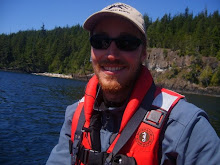 I'm writing to share with you all one of my biggest pet peeves. No, it isn't global warming deniers, people who talk loudly on cell phones in public, or even car alarms (though those are certainly all in the running). It's something more seemingly benign, but ultimately more horrible.
I'm writing to share with you all one of my biggest pet peeves. No, it isn't global warming deniers, people who talk loudly on cell phones in public, or even car alarms (though those are certainly all in the running). It's something more seemingly benign, but ultimately more horrible.PLASTIC!
I don't have a horrible-enough font at my disposal to describe it (Eds. note: Showcard Gothic is pretty terrifying). Now I know what you're thinking: are car alarms really as annoying as global warming deniers? Perhaps a question more relevant to this discussion would be: how can something so useful and seemingly beneficial to society be so ultimately terrible? The answer:
(Credit: State of Hawaii)
Basically, it's everywhere and it lasts forever! This is not news to many of you. Neither, I'm sure, is the existence of the 'Great Pacific Garbage Patch' in the North Pacific Subtropical Gyre (in fact there is an western patch, south-west of Japan, and an eastern patch between Hawaii and California). In a recent post, one of the authors of the blog Deep-Sea News recounted her sampling voyage to the Gyre, where she encountered both tiny plastic particles in her samples and large floating plastic debris.
While not quite the 'Island of Garbage' that might springs to mind, a small amount of plastic in relatively large area of ocean still adds up to incredibly large masses of plastic (Up to 350 million tons). This becomes apparent in places like Hawaii (pictured above), which is very close to the Subtropical Convergence Zone (STCZ) where a lot of debris (and, sadly, marine life) accumulate.
In the Atlantic Ocean, where a similar scenario presents itself, a recent study suggests that the amount of floating plastic has not increased over the past 22 years. It is thought that the debris breaks up into fine pieces which are no longer picked up in sampling nets. This may seem like a good thing, but keep in mind that the smaller pieces of plastic are more likely it is to be ingested by marine life.
As for the marine life itself, the effects of plastic are devastating! Many seabirds will mistake plastic debris and ingest it, or worse, take them back to their chicks. This results in young and adults alike literally starving to death on a full stomach (full of plastic that is). Even when the debris breaks down, there are other problems. Remember that big scare about endocrine-disrupting BPA in plastics last year? It may not be on the shelf anymore, but it is certainly still in the ocean. BPA and other plasticizers has been shown to affect reproduction in fish, molluscs, and crustaceans (which is bad news for ecosystems and fisheries alike).
So what is to be done? Well, you could collect the debris and recycle it into colourful vacuum cases, as Electrolux did recently. A simpler solution is to recycle it before it reaches the water, or simply use less of it. One of my current favorite blogs, Plastic Manners, chronicles the exploits of a young urbanite who valiantly attempts to eliminate plastic from her life entirely. This is no easy task in a petroleum-based age, but it is one to which more people (myself included) could aspire.
We will be defined, after all, by what we leave behind. In their current state, our oceans are not something I want to be remembered for.

This picture made my heart absolutely sink. The Big Island is my favorite place in the world.
ReplyDeleteIt is pretty horrifying. I guess that must have been an El Nino year. The pictures that really get me are the ones of the dead sea birds, where the bird has decomposed, but the debris in their stomach looks pretty much the same.
ReplyDelete